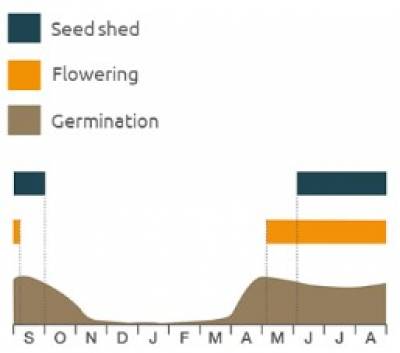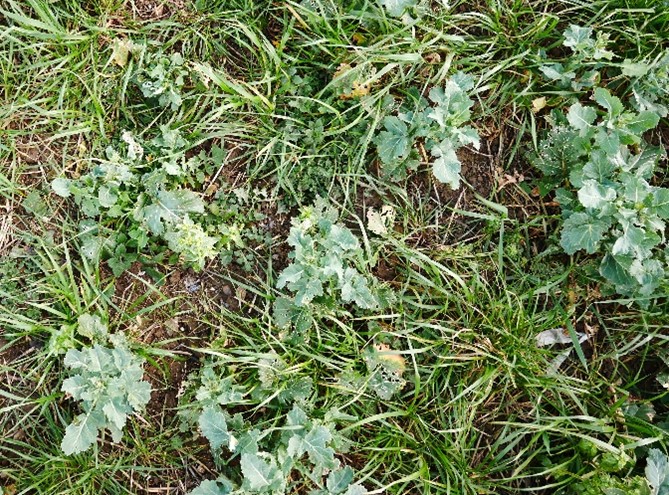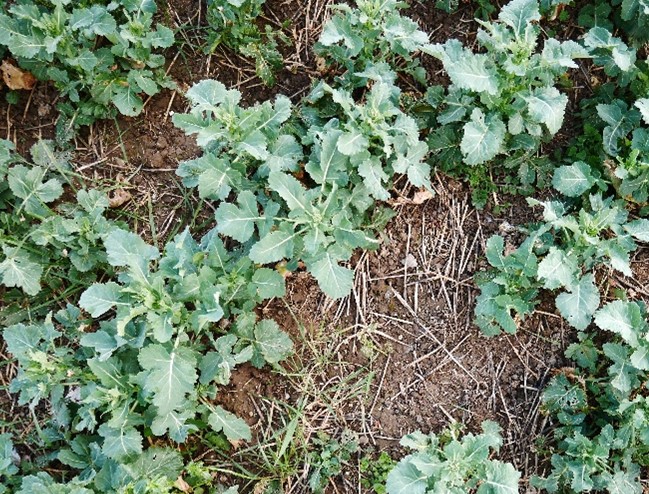Getting control of weeds in oilseed rape
Oilseed rape weed management has evolved over the last 10 years, mainly due to the challenge of establishing the crop with certainty and the introduction of more effective post-emergence broad-leaved weed herbicides.
Before this development in chemistry there was a lack of flexibility - crops had to be treated early and all that was left was to hope for the best. Now though, more post-emergence solutions mean that many wait until the crop is established to tackle the weeds that develop. However, this does have downsides.
Grassweed control at the point OSR has emerged means letting both grow, increasing the risk of competition and opportunity for the weeds to take over. With the loss of carbetamide (Crawler) and this year being the last for use, there are fewer active ingredients to control the most difficult weeds too. The pressure on these herbicides increases further when we consider the growing number of early drilled crops (if soil moisture allows), which can mean potentially bigger weeds under the canopy as they'll have more time to grow before being sprayed.
I recommend you find a balance. Rather than opting for one timing when it comes to weed control, consider how today's solutions could work as a wider, more flexible programme.
Start clean
To get the best control, a clean seedbed is important. Grassweeds and broad-leaved species that may be present ahead of OSR establishment – either newly growing or from the previous crop - need to be targeted.
Note there is only a small window between harvest and drilling your OSR, particularly as the crop should go in as soon as sufficient soil moisture allows.
The most prevalent weeds: Black-grass and ryegrass
Black-grass has been a consistent challenge for a long time but ryegrass is becoming an increasing problem in the UK.
In 2020 crop production technical lead, Dr Paul Fogg wrote a blog about post-harvest grassweed control and his advice still stands. In it he touches on management strategies for weed species including black-grass, ryegrass, wild oats and bromes. Read it here.
With the threat posed from these weeds, many are starting to wonder if ryegrass is the new black-grass; nasty pockets have certainly appeared in OSR crops. As Paul mentioned, infestation can result in a 5% yield loss if plants are typically five per m2 and with more tillers and seeds than black-grass, the weed can quickly become a cause for concern.
What to do if your crop contains ryegrass
The weed normally has low dormancy, but germination can be prolonged depending on soil moisture. As with black-grass, ryegrass tends to germinate in the top 5-6cm of the soil profile and emerge over a longer period. For OSR, in theory the 'peak' germination period for ryegrass is into September when the crop is establishing and providing low competition. See the below diagram from AHDB which shows the months ryegrass can be present.
Referring back to Paul's blog, ryegrass resistance is common so the black-grass stubble management strategy he outlines can be applied to this weed too.
Establishment
Given the historic challenges associated with OSR establishment, fewer pre-emergence herbicides have been used in the crop. In areas at risk from cabbage steam flea beetle (CSFB), this is the right approach unless there is a problem with specific weeds such as hedge mustard, groundsel or chickweed. Clearfield varieties also offer a good option for controlling weeds post-emergence due to the combination of innovative plant breeding and herbicide technology. Read the MyVarieties Seed catalogue to find out more.
Ultimately, it's about getting consistent control. Ahead of clethodim and propyzamide, carbetamide was used early in the herbicide programme to keep black-grass and ryegrass under control but as mentioned, it is no longer an option. Metazachlor now has greater use and serves as a foundation to improve the control from these chemicals.
In our trials, we found metazachlor pre-emergence can provide 29% more control of ryegrass in high-pressure scenarios. In easier circumstances, metazachlor used at the one true leaf stage gave 5-20% more grassweed control.
This timing gives the opportunity to prolong broad-leaved weed control by adding quinmerac or dimethenamid-P. Metazachlor brings activity on chickweed and groundsel, helping to keep weeds small so following herbicides are more effective.
Moisture
Clethodim and propyzamide are the main active ingredients for OSR grassweed control and indeed to rotational weed control too. Neither have seen a reduction in efficacy in field when it comes to resistance. However, they are heavily affected by conditions at use. Both need moisture near application but for different reasons.
- Clethodim requires active growth so there is enough plant to intercept the active ingredient. This means we're looking for three or more true leaves of the grassweed to ensure enough product is taken up to kill the plant. The limiting factor in late September can be dry conditions, so moisture is key. Clethodim is also affected by hard water so a water conditioner, such as Aquascope, should be used to ensure the herbicide's efficacy is not reduced.
- Propyzamide requires moisture so it can get to the roots of the weed. This is a balancing act – there needs to be enough moisture to get it into the plant but not too much that there's the risk of run-off. Another consideration is temperature; propyzamide breaks down too quickly when used in warmer conditions/soil temperatures are over 10℃. This is why we tend to wait until late autumn or winter to use this herbcide.
By adding metazachlor or other pre-emergence residual herbicides, you'll get more reliable weed control and cover species that can be difficult post-emergence.
Once you manage to get the threat of weeds under control; the next challenge is holding them off. It's important to ensure herbicide applications are optimised during autumn. Attention to detail on timing as well as growing conditions can make all the difference in oilseed rape.
If you have any questions regarding weed management in oilseed rape, get in touch with your local Frontier contact. Alternatively, you can contact the team.
As a subscriber, you’ll receive email alerts each time a new blog is published so you can always stay updated with the latest advice and insights from our experts







Comments